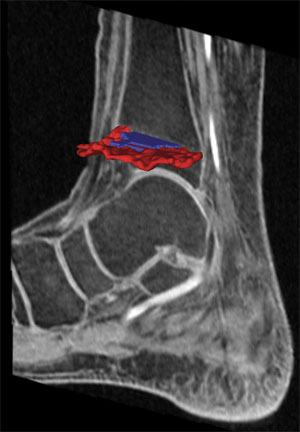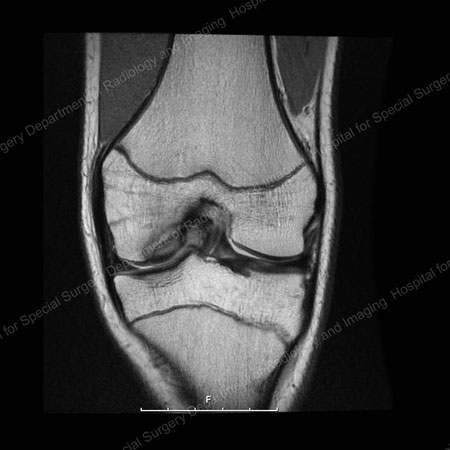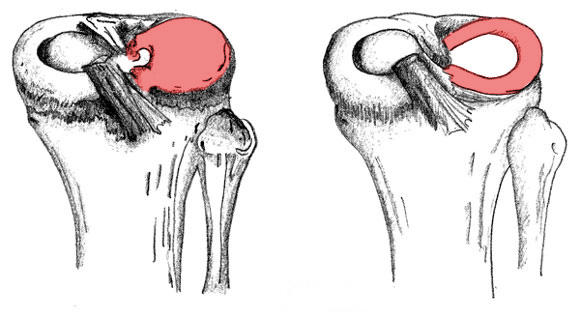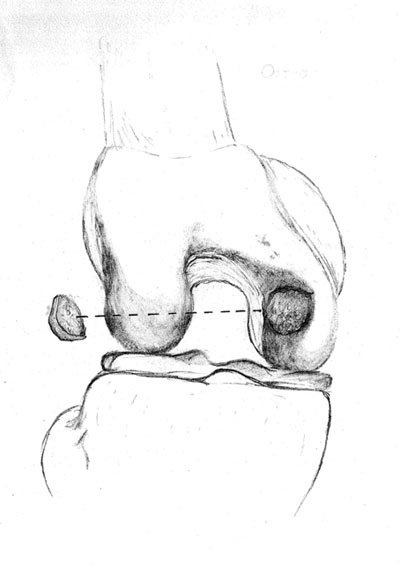Pediatric Sports Injuries: An Overview
An interview with HSS surgeon Daniel W. Green, MD about growth plate injuries, osteochondritis dissecans, discoid meniscus, injuries of the anterior cruciate ligament (ACL), and other problems faced by young athletes
Introduction
With more young people participating in organized sports than ever before, it’s no surprise that the number of pediatric sports injuries is on the rise. While some of these injuries mirror those seen in adult athletes (fractures, sprains, and torn ligaments, to name a few), injury patterns, diagnostic techniques, and choice of treatment can vary significantly in children.
“For example,” explains Daniel W. Green, MD, Associate Attending Orthopaedic Surgeon at Hospital for Special Surgery (HSS), “The end portions of some long bones in children where growth continues until skeletal maturity [known as epiphysial or growth plates] contain less calcium than those in skeletally mature adults and therefore can look different on routine X-ray, making some fractures difficult to assess using regular X-rays.” As a result, Dr. Green and his colleagues at HSS often use additional diagnostic tests such as MRI (magnetic resonance imaging), and ultrasound to obtain more information about the injury.
Treatment
When treating children, the pediatric orthopedist must take into account potential damage to the growth plate. Tri-plane fractures (a complex type of ankle fracture) constitute one such injury. Seen only in adolescents and sometimes mistaken for sprained ankles, these fractures require prompt attention and often surgery. “Growth plate fractures of the knee can also be difficult to diagnose,” Dr. Green notes. Some growth plate fractures may be treated conservatively, while others can require surgical correction. Improperly treated, these injuries may result in deformity and altered growth of the affected joint.
New imaging technique helps guide treatment
A new technique for obtaining images of growth plate injuries in children can now help guide treatment decisions. Developed by a team of HSS scientists and clinicians, the technique provides computer-generated 3D models obtained from MRIs that surgeons can use in the operating suite to achieve optimal results.

Figure 1: New 3D models of growth plate injuries obtained from MRIs offer
greater precision and speed with less radiation than CT imaging.
In healthy children, new bone tissue develops from the growth plate, or physis, which is located at either end of the long bones. Physeal bars – bony tissue that forms across the growth plate after trauma – can result in either a deformity or a shortened limb. If the bar covers less than 50 percent of the growth plate, surgical removal can restore normal bone growth.
Common sports injuries in children and teenagers
Knees
Among the orthopedic knee problems seen frequently in children who participate in sports are osteochondritis dessicans; pain and mechanical symptoms associated with discoid meniscus; and injuries of the anterior cruciate ligament (ACL).
Osteochondritis dissecans
Osteochondritis dissecans (OCD) is a condition that develops in the knee, specifically in the cartilage and underlying bone that lines the end of the femur (the long bone in the upper leg) where it meets the tibia in the lower leg to form the knee joint.

Figure 2: Focus of osteochondritis dissecans (OCD) is present in the classic location of the
inner margin of the medial femoral condyle in the knee, in the middle-left of the image.
Click on image to enlarge.
Thought to be the result of repeated micro-trauma (small stress injuries), the condition causes pain and disability. In severe cases, a small piece of bone may break loose into the knee joint. Fortunately, in 90% or more of OCD cases, the patient can make a complete recovery with rest and activity modification for a period of three to six months.
For more severe cases, HSS surgeons surgically reposition the bone fragment and secure it in place using a biodegradable screw or nail. One such device, the SmartNail®, was developed by HSS surgeon Russell F. Warren, MD.
“Together with rest and physical therapy we have a very high success rate in treating these patients,” Dr. Green adds.
Discoid meniscus
The term “discoid meniscus” describes a congenital condition in which the meniscus, a cartilage pad found in the knee joint, is formed in a disc shape rather than the normal C-shape found in most individuals.

Figure 3: Diagram of a discoid meniscus (L) and a normal meniscus (R).
Note the backwards C-shape of the meniscus on the right. Illustration by Mac O'Conor.
Some people with discoid meniscus never experience any symptoms and do not require treatment. However, if a child with discoid meniscus is experiencing pain and mechanical symptoms, such as stiffness or locking, surgery may be recommended.
Using arthroscopic techniques, the orthopedic surgeon sculpts the meniscus into the more anatomic C-shape. If the areas where the cartilage attaches to the bone are found to be loose (a condition that is sometimes found with discoid meniscus), they can be reaffixed during the same procedure.
ACL tears in children and adolescents
Partial or complete tears of the anterior cruciate ligament (ACL) – which is part of a complex of ligaments that help stabilize and support the knee joint – are often associated with sports that involve pivoting. Some examples include soccer, lacrosse, football, basketball, field hockey, and skiing.
As in adults, ACL injuries are more common among female athletes than in males, perhaps owing to anatomic differences in the knee, as well as mechanical differences in the way that males and females move, jump, and land.
“When an adult ruptures an ACL, it’s usually the ligament that is disrupted,” says Dr. Green.
In children, because the ligament may be stronger than the bone, the ligament may, instead of tearing in mid-substance, pull away from its attachment to the tibia with a small piece of bone attached.

Figure 4: Diagram of a tibial spine fracture, with small piece of bone detached from the tibia.
Illustration by Robert O'Conor
This type of injury (also known as tibial spine fracture or a tibial eminence fracture) can be surgically repaired, often with the use of arthroscopic or minimally invasive techniques. Following recovery, the child’s ACL is usually restored to normal function.
By strengthening the thigh muscles, the quadriceps, and hamstring muscles, some ACL injuries can be avoided. HSS has developed an ACL injury prevention tip sheet with exercises and drills to help young athletes develop strength and minimize injury.
Other sports injuries in children
In addition to the problems described in this overview, Dr. Green and his colleagues in the Sports Medicine Service at HSS also see young athletes with injuries of the arms and shoulders, including shoulder dislocations. Among little league pitchers, increasing numbers of children are developing “little league shoulder,” and “little league elbow.” These injuries usually result from overuse and improper throwing mechanics, and they result in persistent pain and potential long-term disability (including growth disturbances in the shoulder or elbow).
Fortunately, Dr. Green notes, many of these conditions, if recognized early and managed appropriately, can be treated successfully with no long-term disability. Surgery, when required, can often be performed arthroscopically with techniques that were pioneered at HSS.
For more information on treatment of pediatric sports injuries at HSS, please call our Physician Referral Service at 1.877.606.1555.
Summary by Nancy Novick
Authors
Chief of the Pediatric Orthopedic Surgery Service, Hospital for Special Surgery
Attending Orthopedic Surgeon, Hospital for Special Surgery
